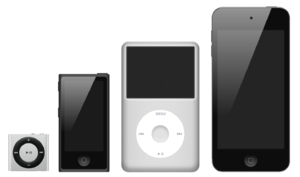I spent five years (four as a student, one as a staff member) at Florida Southern College in Lakeland, FL. Yesterday, it was announced that the Princeton Review named Florida Southern College as the "Most Beautiful College Campus" in the United States. Good ol' FSC announced it on Facebook and Twitter yesterday and this morning, it showed up on the Today Show (despite Ann's questioning look and incorrect graphic):
[vodpod id=Video.14362285&w=425&h=350&fv=launch%3D43985296%5E200874%5E225578%26amp%3Bwidth%3D420%26amp%3Bheight%3D245]
Of course, I posted this all over the Twitter and Facebook. Many friends of mine felt as if this was an appropriate time to throw out the, "Hey, looks aren't everything" lines. I'd like to share below (names blurred to spare the guilty):
All of the above participants are friends of mine, a few of whom I'm very close to. They miss the point, however.
When I came to Florida Southern, I remember moving into Hollis Hall, the dreaded first year male dorm (although I'd be slaughtered for mentioning the D-word, they are residence halls or community living centers, not dorms). The day we moved in, they were conveniently replacing major portions of the flooring in the lobby. Hollis's rooms were small, brick rooms, with non-moveable furniture. I remember thinking, "Welp, welcome to college." My girlfriend (now wife) though, moved into one of the gorgeous brick buildings in the center of campus, where the first year women live. She had a large room, with a giant window to the outside, her own bathroom, etc. I remember thinking, "Welp, I guess I'll hang out here."
That year, though, was the second year of the current President's residency at Florida Southern, Dr. Anne Kerr. Florida Southern's previous President had done phenomenal things for the college's relationship with students and Dr. Kerr came in to take care of some of the finances and build needed buildings.
What most people don't know about Florida Southern is that it is the largest single-site collection of Frank Lloyd Wright architecture in the world. Those people weren't in Annie Pfeiffer Chapel setting up for Praise Band Practice when tourists came waltzing through gazing up at the large glass ceiling overhead. Like him or not (I could take him or leave him), Frank Lloyd Wright is probably one of the best known, and most skilled, American architects of all time. While Florida Southern's buildings are not his most famous pieces, they are fine work and are working examples of quality artistry by FLW. They speak highly of our President Ludd Spivey, when he convinced FLW to come design a campus.
Throughout Dr. Kerr's tenure at Florida Southern, she has made it her goal (through her skills as a fund raiser) to beautify the campus...one building at a time. She's torn down the buildings that made no sense, didn't fit the FLW theme, and worked to build buildings that made the campus stand out. She's raised money to support the United Methodist Church (and our relations with the school), and she (along with a hard working maintenance staff and generous givers) has turned the college into a gorgeous campus over the past six years or so. As she's built buildings, she didn't just hire any random architect to come and build new buildings, she hired Robert A.M. Stern of Yale University's School of Architecture. His mission was to design brand new, functional buildings, that attempted to emulate Frank Lloyd Wright's artistic vision, while bringing Florida Southern into the 21st century. He has, and continues to do, a phenomenal job.
Because when you visit a place, what it looks like says a lot about it.
Dr. Kerr knows that. She gets it.
In all honesty, what Dr. Kerr has done with Florida Southern mimics, I think, what Steve Jobs has done with Apple during his tenure there. She got rid of unnecessary, nonsensical pieces and replaced them with new, beautiful, architecturally-fitting buildings and landscapes that say quite a bit about where Florida Southern is, and where it is going. Because while the outside does not always give us a clear image of the inside, it says a lot about attitudes and forward thinking ideas. I think Duke University's campus reflects the same mindset.
So, does it matter what Florida Southern looks like on the outside? Yes, yes it does. It's not about attracting more students, although that certainly is a byproduct. It's not about "fooling" the outside world. It's not even about getting Florida Southern's name on the map. Florida Southern's beauty is about creating a gorgeous environment where young minds can come to be molded, shaped, and changed. Florida Southern's environment says a lot about the future of the college and where the leadership behind the school is taking the school. Ludd Spivey is regarded around campus as a brilliant mind who brought the school back from devastation in a tough economic time and changed the campus to be the "temple of education" that he thought it needed to be. Dr. Kerr's transformation of the campus is perhaps not as dramatic, but I think she's done for the school what few Presidents would have dreamed possible.
Florida Southern's tagline is: On the move!
And it is a very, very appropriate tagline. I think the Princeton Review's choice of Florida Southern as the most beautiful campus is complete affirmation of that fact.
Dr. Kerr ought to be congratulated, not criticized, as she has done an extraordinary job.
-B
See below when Florida Southern was featured on the Travel Channel (and my Grandmother in law talking about how she helped to build the Buckner Building).
[youtube=http://www.youtube.com/watch?v=KSjlqERhAq4]
Did you catch the Travel Channel's quality videography at 3:22?





